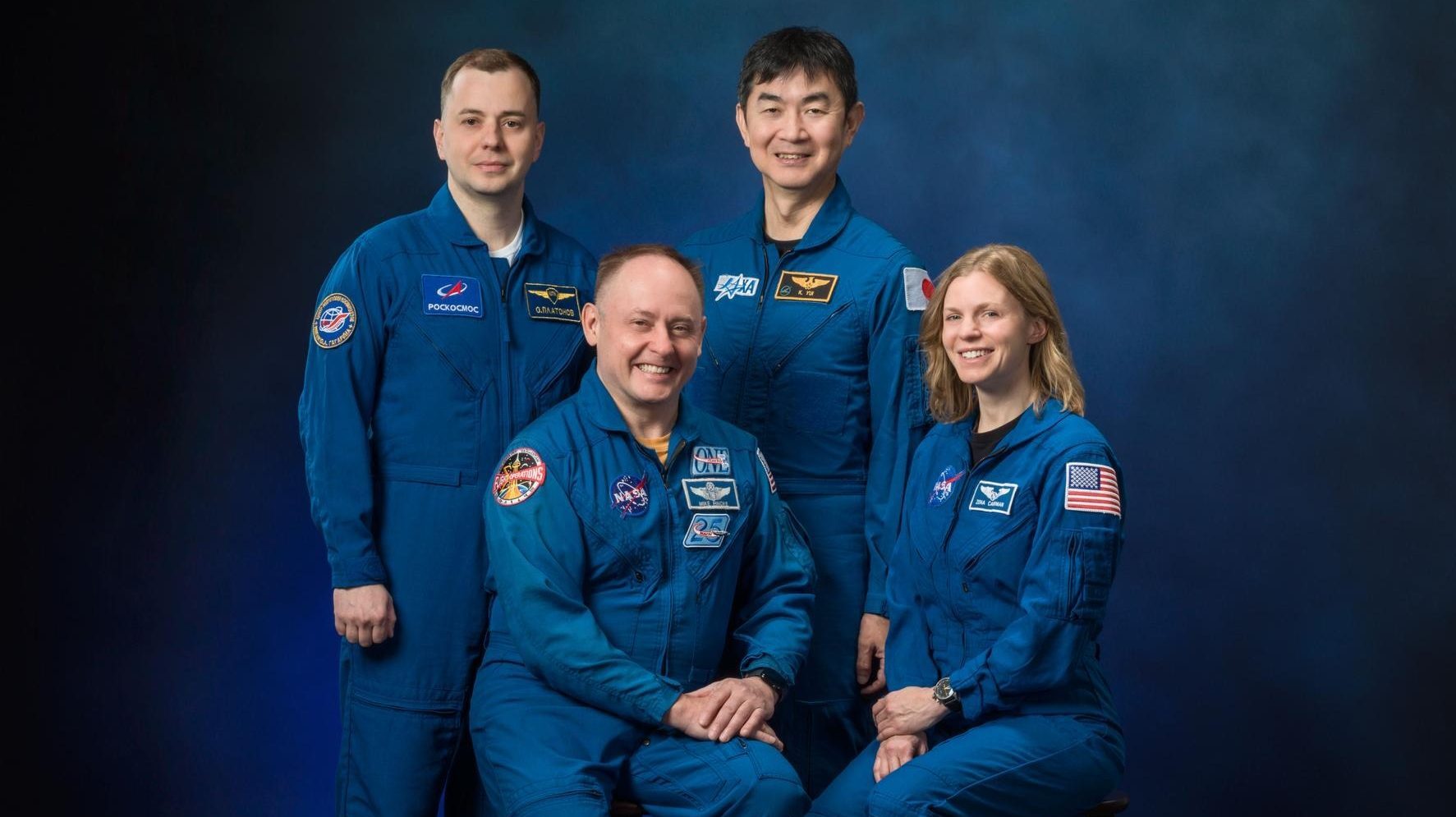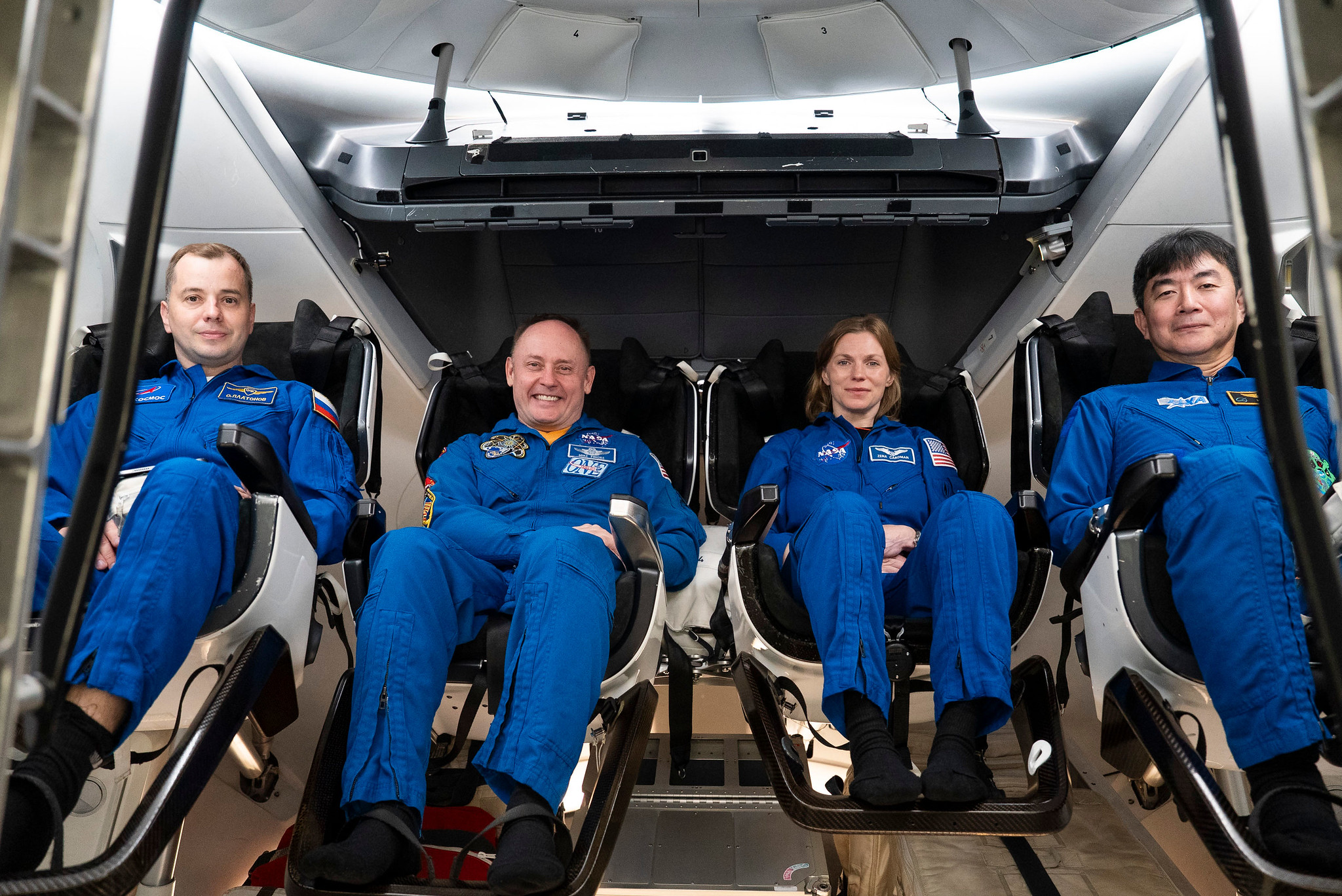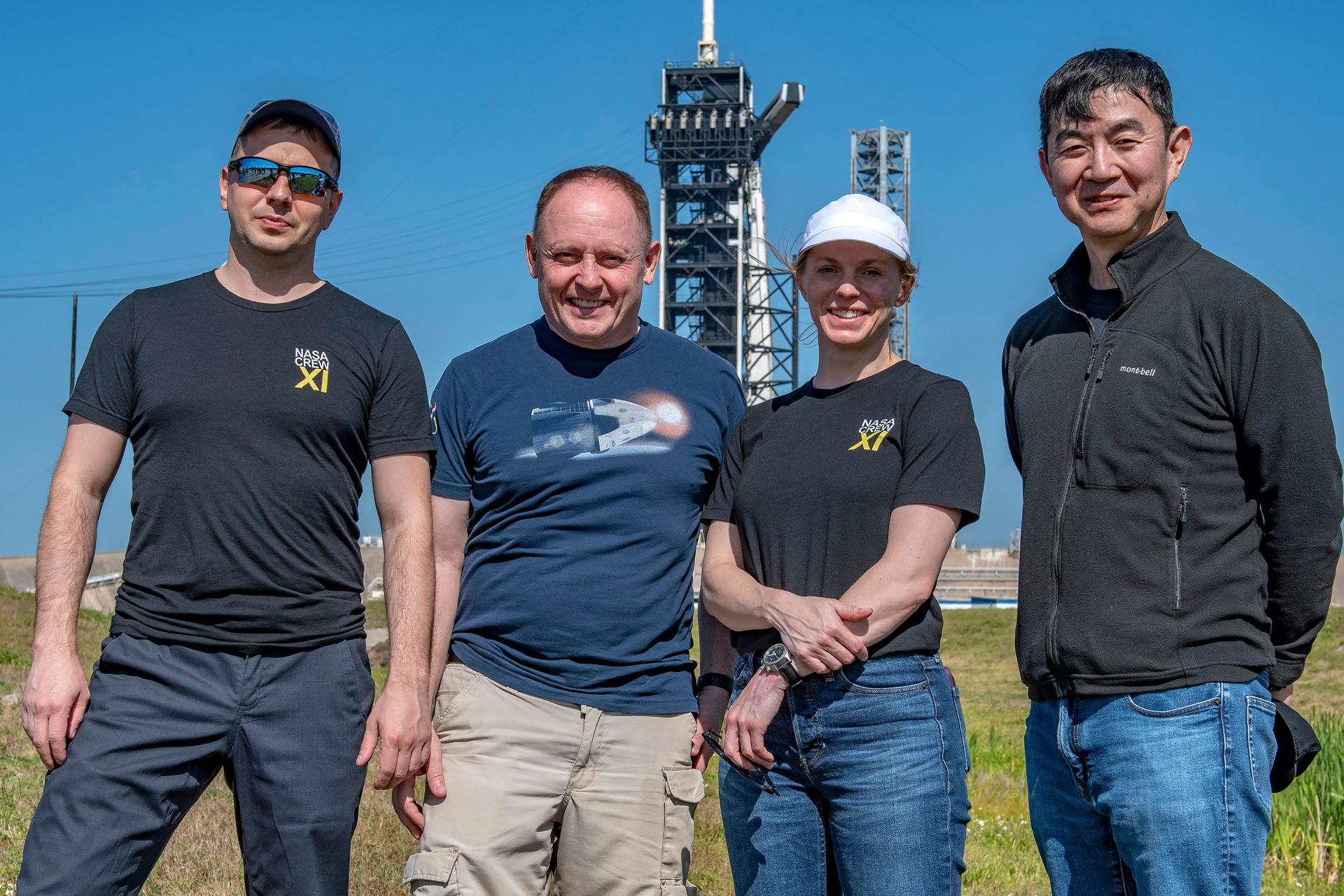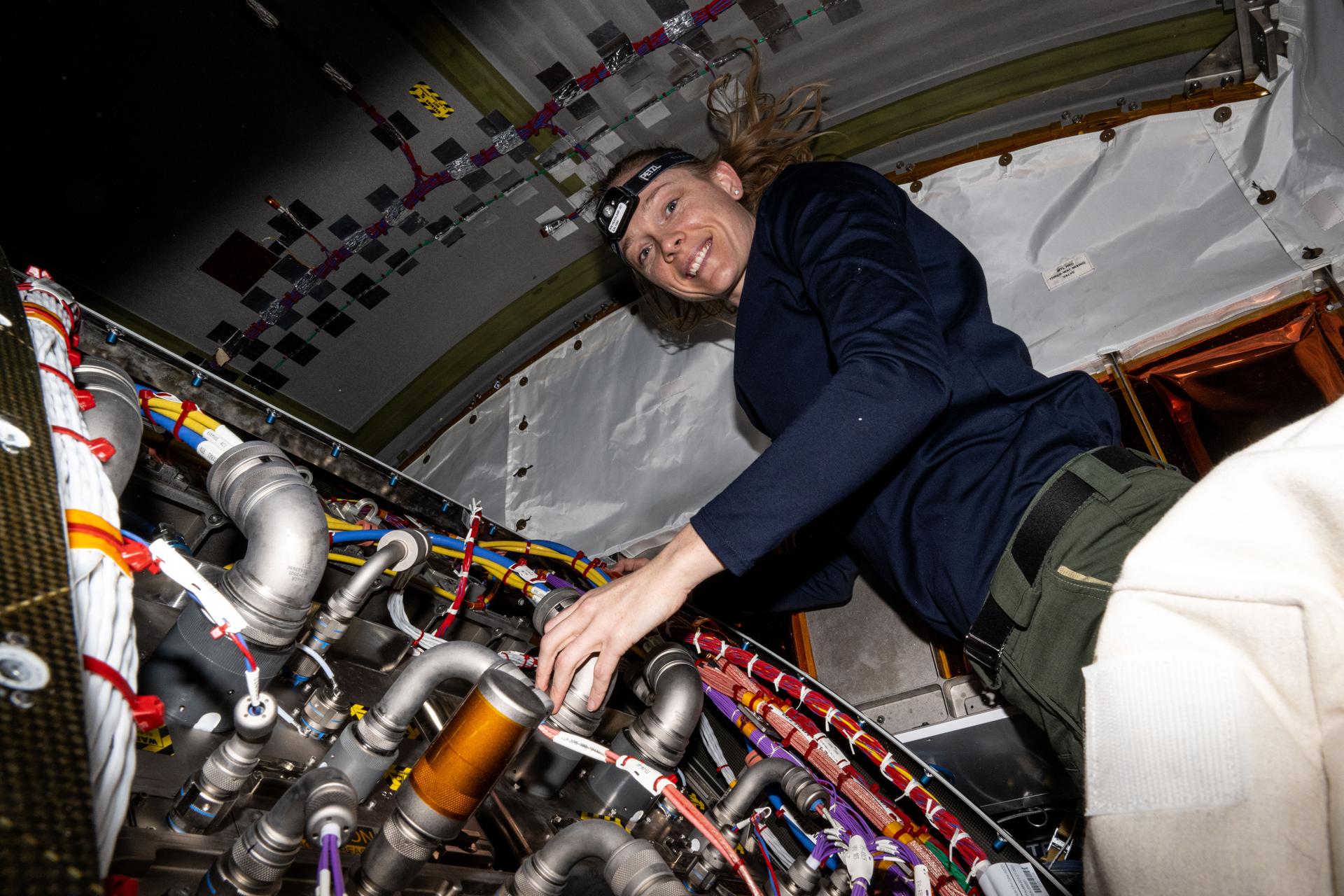Crew Swap Preps Underway as Health and Robotics Research Wrap Week
The Expedition 73 crew is turning its attention to the arrival of a new crew next week then getting ready to split up shortly afterward. In the meantime, human research, robotics, and lab maintenance wrapped up the week aboard the International Space Station.
Flight Engineers Anne McClain and Nichole Ayers from NASA and station Commander Takuya Onishi from JAXA (Japan Aerospace Exploration Agency) and Kirill Peskov from Roscosmos talked to reporters on Friday about their upcoming departure. NASA’s Commercial Crew quartet arrived at the station aboard the SpaceX Dragon crew spacecraft on March 14 as NASA’s SpaceX Crew-10 mission joining Expedition 73. Now, they are packing Dragon with personal items and other cargo and preparing for a return to Earth in early August.
McClain, Crew-10 commander, during the news conference talked about the effort from mission controllers around the world who ensure the orbital outpost and its crew operate safely. “There’s always a massive team on the ground, somewhere around the world, that is having to work really hard to keep the train on the tracks,” said McClain on her second spaceflight.
Before Crew-10 leaves, the orbiting lab residents will welcome NASA’s SpaceX Crew-11 mission a day-and-a-half after it launches aboard a Dragon spacecraft from NASA’s Kennedy Space Center no earlier than 12:09 p.m. EDT on Thursday, July 31. Crew-11 Commander Zena Cardman and Pilot Mike Fincke, both from NASA, and Mission Specialists Kimiya Yui of JAXA and Oleg Platonov of Roscosmos will join the Expedition 73 crew and begin a long-duration space research mission.
Back on the orbital outpost, the crew continued exploring how the human body adapts to weightlessness to keep astronauts fit and healthy on long term missions. Ayers kicked off her shift pedaling on the Destiny laboratory module’s exercise cycle while wearing electrodes and breathing gear measuring her heart and breathing rate. Doctors monitor the astronauts’ aerobic and cardiovascular health to ensure they are ready for strenuous tasks such as an hours long spacewalk or the return to Earth’s gravity after several months, or even years, in space.
Roscosmos cosmonauts Sergey Ryzhikov and Alexey Zubritsky kept up their gastroenterology studies on Friday with two ultrasound scans of their bellies. The first scan occurred on an empty stomach shortly after they woke up. They conducted their second stomach scan after breakfast and a weekly conference with mission controllers on the ground. Doctors are studying how microgravity affects the digestion system that may lead to space-caused biochemical changes.
Onishi set up the CIMON artificial intelligence-powered robotic assistant in the Kibo laboratory module enabling engineers on the ground to monitor it for JAXA’s ICHIBAN technology demonstration. NASA Flight Engineer Jonny Kim spent his shift in Destiny setting up and refilling the fluid servicer system used to maintain and repair rack water lines and systems throughout the space station.
Peskov resumed updating computer software to enable remote control functionality of the European robotic arm. He also once again tried on and tested the experimental lower body negative pressure suit that may help crews adjust quicker to the return to Earth’s gravity. Zubritskiy assisted Peskov with the specialized suit that draws fluids pooling in the upper body toward he feet potentially counteracting space-caused head and eye pressure.
Learn more about station activities by following the space station blog, @space_station on X, as well as the ISS Facebook and ISS Instagram accounts.
Get the latest from NASA delivered every week. Subscribe here.
Powered by WPeMatico
Get The Details…
Mark A. Garcia








